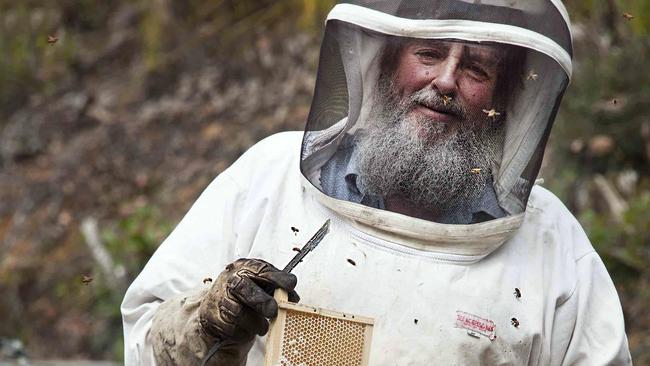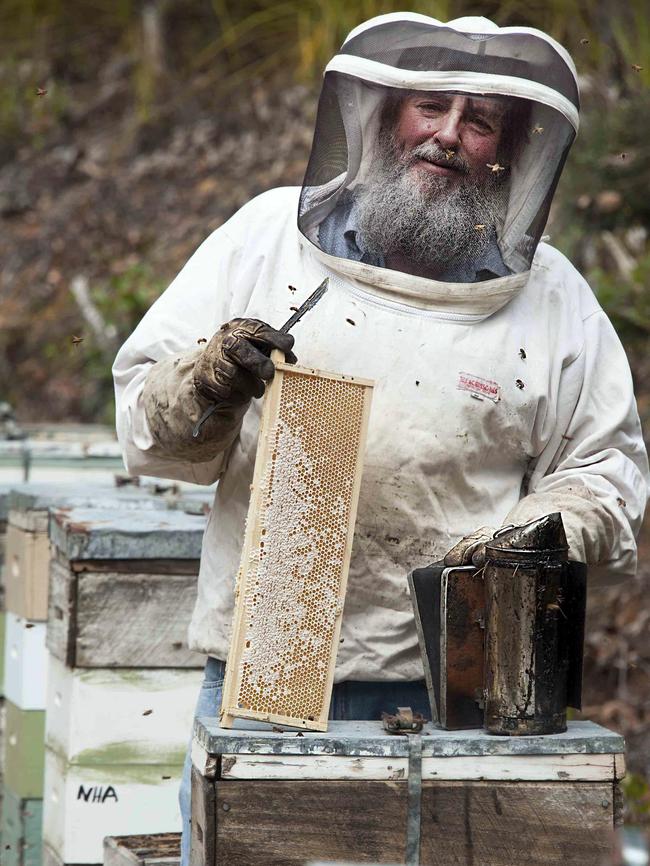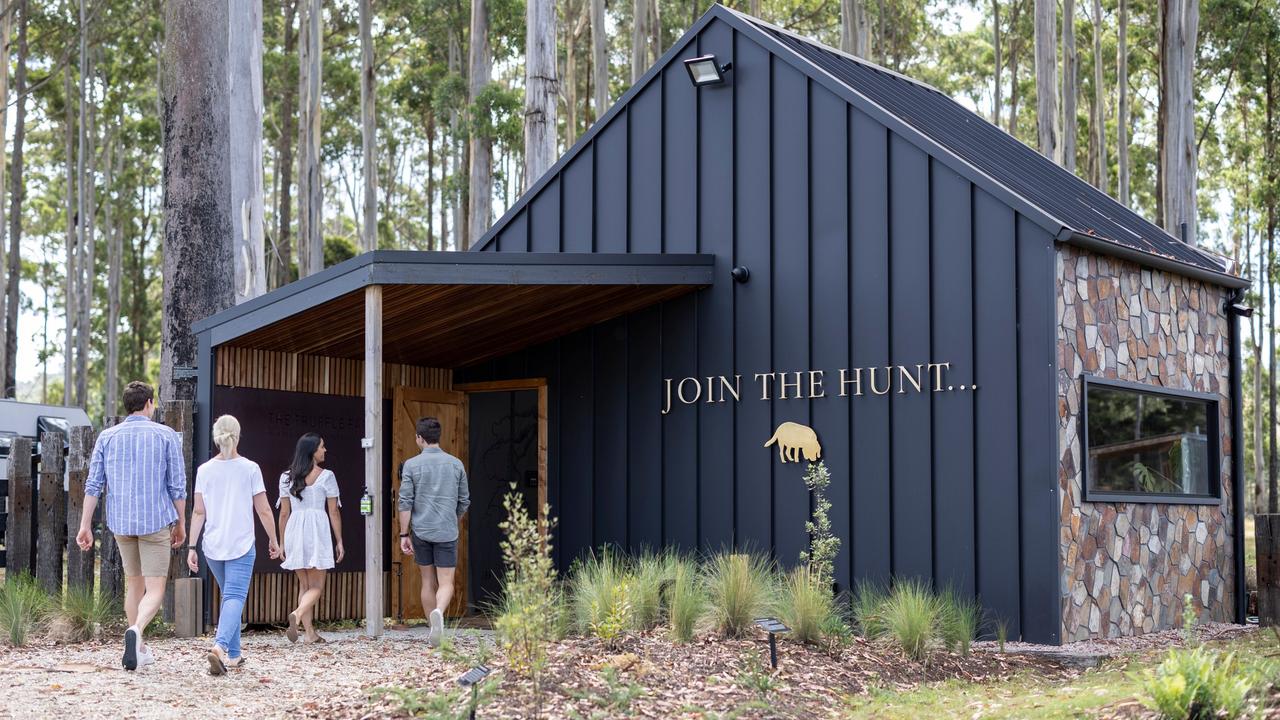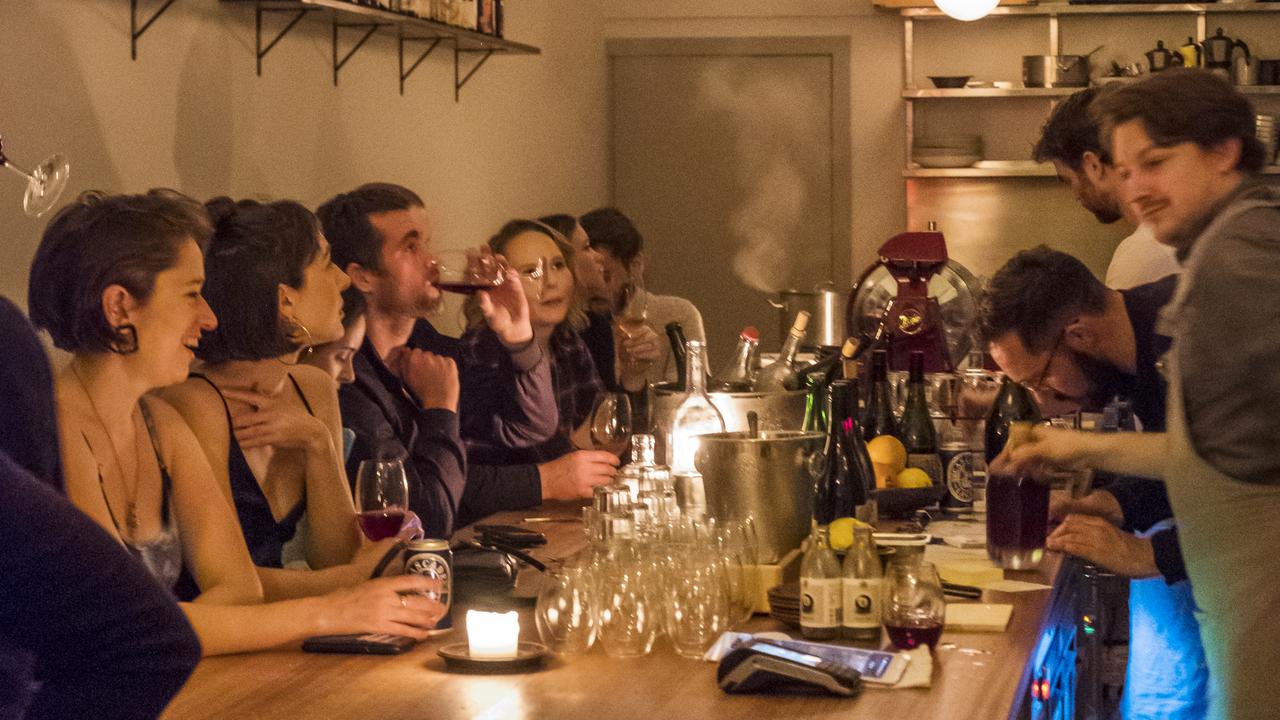Sting in the tale
While some beekeepers face an uncertain future after the bushfires, one family’s business is buzzing, writes ELAINE REEVES

Food and Wine
Don't miss out on the headlines from Food and Wine. Followed categories will be added to My News.
I was stung twice for my effrontery in partaking in a little daylight robbery.
Once on the back of my leg, which I recognised as a sting only because of the context — watching Bruce Direen “rob” honey from hives lined along a road close to the Picton River near Geeveston (formerly known as Honeywood).
But the second, after I had peeled off the protective veil and white jacket, was by an angry bee just below my eyebrow. And there was no mistaking that one. It hurt and hurt and eventually produced the effect of big red bruise that shut my eye.
Not only was the protective clothing gone but there was no smoke being produced at this supposedly safe distance from the hives.
Bruce works a bellows that blows smoke from smouldering pine needles on the hives when he is taking honey from them. The smoke makes the bees believe a bushfire is approaching and they begin gorging on honey to fuel up for an escape to establish a new home.

They are too intent on survival to pay any mind to honey raiders.
Bruce sighs in sympathy for beekeepers in the northwest, such as Robbie and Nicola Charles, of Blue Hills at Mawbanna, where fires have burned for weeks and destroyed leatherwood stands. For the Blue Hills bees the smoke is not the phony threat.
January and February are the peak time for leatherwood to flower. And leatherwood honey comprises as much as
80 per cent of Tasmanian honey. The trees grow in temperate rainforests along rough forestry roads, so there is no access in a fire.
The Charles have said they expect their income to be about 80 per cent down this year — to them the opportunity to be stung would be a fine thing.
Bruce and his wife Jenny own North Huon Apiary, which they run from Ranelagh. At age eight Bruce began helping his father with his “well-paying” beekeeping hobby. He left for the mainland but came home when his father became ill and has never left again.
In the 30 years he and Jenny have been married they have turned the hobby into a business.
And for 28 years they have sold their honey at Salamanca Market every Saturday.
Their beekeeping year begins with hiring hives to orchardists for pollination services in spring, which seldom produces honey.
But by late spring they are collecting honey gathered on clover and blackberries.
“Then in the first week December honey proper starts coming in, and it’s a lovely feeling,” Bruce says.
“Honey proper” might be bluegum, prickly box, manuka/tea tree but most likely the long, and reliably, flowering leatherwood.
Bruce says bees do not put honey from different sources in the same cell. “When the clover and blackberry are producing just as well as each other I’ve seen blackberry, which is translucent, on one side of the frame and clover, which is amber, on the other,” he said.
When one plant stops flowering and another begins, the flavour in the frames can be hard to pick.
“If the flavour is ambiguous, we call it Bush [from the forest] or Meadow [from paddocks],” Bruce says.
“Robbing” the bees is Bruce’s terminology for collecting fully loaded frames from the boxes called supers. A stack of supers comprises a hive.
So do the vegans have it right I ask him — we should not be stealing honey from the bees?
No, he doesn’t think the vegans are right.
“You just have to look at life — everything consumes everything,” he says.
“I’ve been taking out frames for 50 years, and it still takes my breath away.”
He does not believe his “little darlings” resent him for it — not until the nectar stops flowing, anyway. As the season nears its end “angry bees try to take it back when you rob the hives and it’s not a nice atmosphere to work in”.
The solution is to wait for a couple of weeks after the last of the honey has come in, by which time most of the old worker bees will have flown
off to die.
I leave Bruce robbing hives at the rate of 10 an hour and go home to administer to the effects of a bee angry before
its time.


